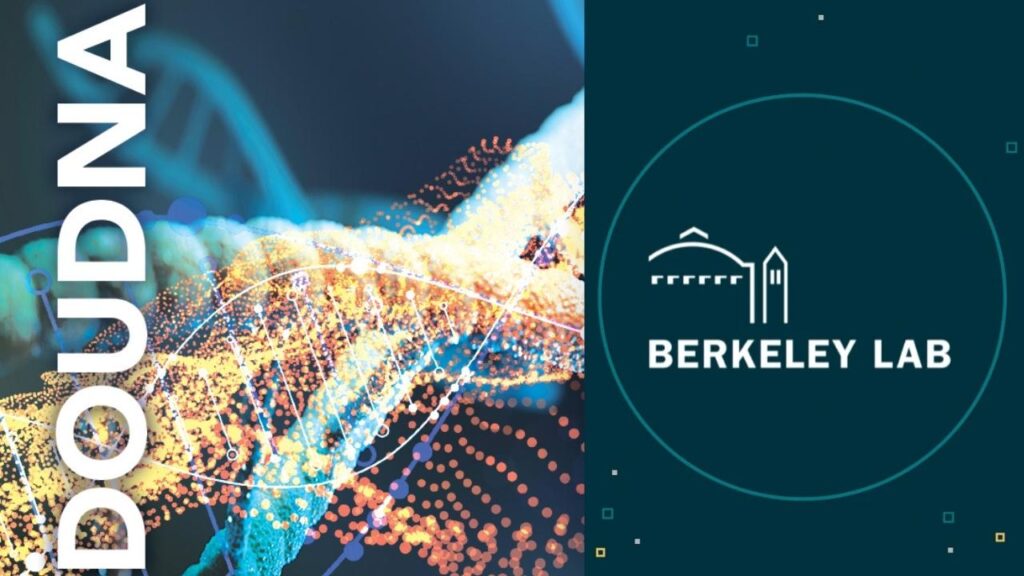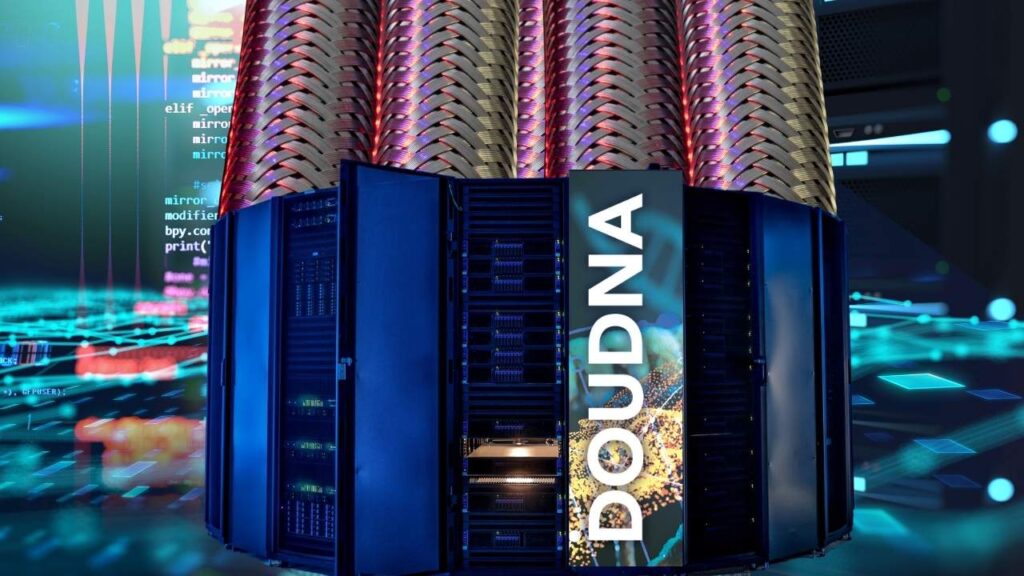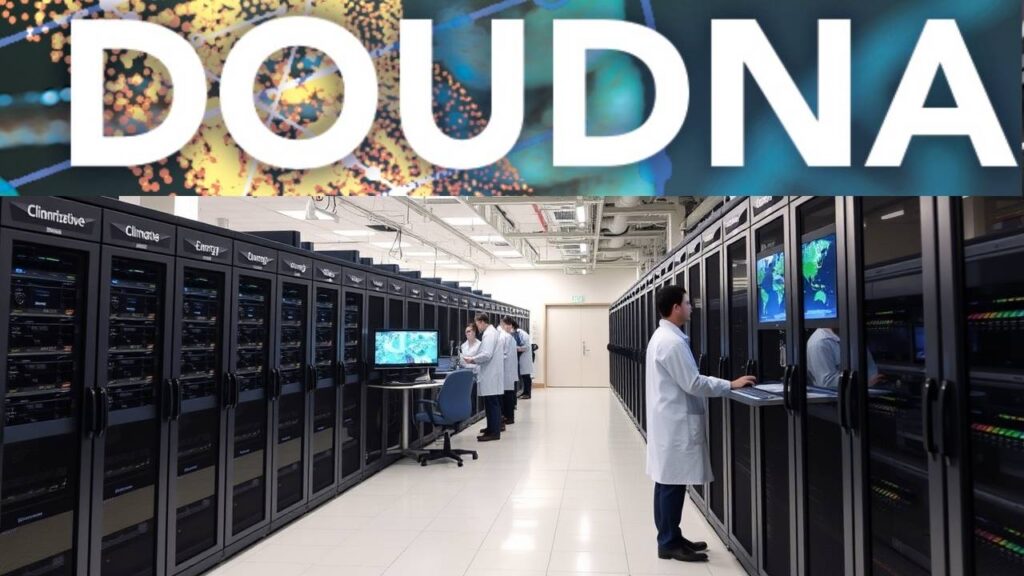Berkeley Lab Unveils Doudna Supercomputer to Propel AI and Genomics Research: The Doudna supercomputer is poised to revolutionize artificial intelligence (AI) and genomics research by providing unprecedented computational power and efficiency. Announced by the U.S. Department of Energy (DOE) and built at Lawrence Berkeley National Laboratory (Berkeley Lab), Doudna honors Nobel laureate Jennifer Doudna, co-inventor of the CRISPR gene-editing technology that transformed biology.

This next-generation supercomputer will enable scientists to tackle complex problems faster and more accurately across many disciplines, including biomedicine, climate science, and energy research. As one of the most advanced systems dedicated to open scientific research, Doudna represents a critical step toward making large-scale AI and genomic analyses widely accessible.
Table of Contents
Berkeley Lab Unveils Doudna Supercomputer to Propel AI and Genomics Research
| Feature | Details |
|---|---|
| Supercomputer Name | Doudna |
| Named After | Jennifer Doudna (CRISPR co-inventor, Nobel laureate) |
| Deployment Location | Lawrence Berkeley National Laboratory – NERSC |
| Launch Year | Expected in 2026 |
| Technology Partners | Dell Technologies & NVIDIA |
| Core Technology | NVIDIA Vera Rubin platform, liquid-cooled servers |
| Processing Power | Petaflops range (exact TBD) |
| Primary Uses | AI modeling, genomics, climate, energy, physics |
| User Base | 11,000+ scientists globally |
| Official Announcement | DOE News |
The Doudna supercomputer stands at the frontier of scientific computing, blending the power of AI and traditional HPC to tackle some of the world’s most pressing challenges. By supporting research in genomics, climate science, energy, and beyond, Doudna will accelerate innovation and deepen our understanding of nature’s complexities.
Launching in 2026, this system honors a legacy of scientific excellence while empowering thousands of researchers worldwide to push the boundaries of knowledge.
The Evolution of Supercomputing: From Speed to Intelligence
Supercomputers have been integral to scientific progress for decades, enabling breakthroughs from weather forecasting to particle physics. Early systems prioritized raw speed, measured in FLOPS (floating point operations per second). As datasets grew and AI methods emerged, hybrid systems like Doudna now blend traditional simulation with AI acceleration, marking a paradigm shift from pure horsepower to intelligent computation.
This evolution allows researchers not only to run faster calculations but also to analyze complex data in innovative ways, such as predicting protein structures, modeling climate changes in real time, and personalizing medical treatments based on genomic data.
What Makes Doudna Special?
Cutting-Edge Architecture and Technology
- NVIDIA Vera Rubin GPUs: These GPUs provide unparalleled AI and HPC performance, enabling simultaneous training and inference of machine learning models with traditional simulations.
- Dell Liquid-Cooled Servers: Efficient thermal management reduces energy use and increases hardware longevity.
- High-Speed Interconnects: Custom networking ensures rapid data transfer between thousands of processors.
- Massive Memory and Storage: Doudna will feature multi-petabyte storage solutions to handle huge datasets from genomics sequencing and climate simulations.
The system’s precise processing power is measured in petaflops, meaning it can perform millions of billions of operations per second. This capacity enables researchers to work with massive datasets, including terabytes of genomic information or climate data, in a fraction of the time it once took.
From Genes to the Climate: Real-World Impact
Accelerating Genomics Research

Scientists can use Doudna to analyze genomic sequences at scale, identifying genetic markers linked to diseases like cancer or rare inherited disorders. For example, AI models trained on Doudna could predict how gene-editing techniques affect cell behavior, speeding up the development of personalized therapies.
Powering AI Innovation

Doudna’s AI capabilities allow training of models similar to those used in natural language processing and image recognition, but tailored for scientific data. Researchers might simulate protein folding, design new materials, or improve diagnostics tools.
Climate and Energy Breakthroughs

The supercomputer can model complex interactions in Earth’s atmosphere, oceans, and biosphere to improve weather forecasting and climate predictions. It also supports fusion energy research and helps design better solar panels or batteries, contributing to the fight against climate change.
How to Access and Use Doudna
Researchers worldwide can apply for computing time on Doudna through DOE’s NERSC Allocation Program. Access is merit-based, focusing on projects that address DOE mission priorities in science and energy. Users receive training, software support, and consulting services to maximize their research impact.
Interested scientists should visit NERSC’s official site for detailed application guidelines.
Challenges and Innovations in Supercomputing
Operating a supercomputer of Doudna’s scale poses challenges like energy consumption and data management. Berkeley Lab’s adoption of liquid cooling and energy-efficient GPUs reflects an ongoing commitment to sustainability.
Data bottlenecks are addressed with advanced storage architectures and high-bandwidth networks, ensuring data flows smoothly between components—a vital feature when processing genomics or AI datasets.
Looking Ahead: The Future of Scientific Computing
Doudna represents a step toward integrating quantum computing, AI, and traditional HPC. Researchers expect that future systems will blend these technologies to solve even more complex problems.
Berkeley Lab and DOE continue to invest in such research, fostering collaborations that push the boundaries of science.
Glossary of Key Terms
- Petaflop: A measure of computer speed equal to one quadrillion (10^15) floating-point operations per second.
- GPU: Graphics Processing Unit, used for parallel processing, especially effective for AI training.
- Liquid Cooling: A cooling technique using liquid to remove heat, more efficient than air cooling.
- CRISPR: A gene-editing technology that allows precise modification of DNA.
- NERSC: National Energy Research Scientific Computing Center, a DOE facility providing supercomputing resources.
Universities Partner With Industry To Build The Next Generation Of Sustainable Semiconductors
Tech Meets Textiles: Smart Fabrics That Monitor Health and Power Devices
Can DNA Store the Internet? Exploring Molecular Data Storage Technologies
FAQs About Berkeley Lab Unveils Doudna Supercomputer to Propel AI and Genomics Research
What Is a Supercomputer Used For?
Supercomputers handle complex scientific, engineering, and AI problems that require massive computational resources beyond typical computers.
Who Can Use Doudna?
Scientists, researchers, and students affiliated with approved DOE projects can apply for access.
Why Is AI Important for Research?
AI helps find patterns in large datasets, makes predictions, and automates tasks, accelerating scientific discovery.
How Does Doudna Compare With Other Supercomputers?
While not the fastest globally, Doudna’s hybrid design optimizes AI and HPC workloads for scientific research.
Will Doudna Support International Collaborations?
Yes. NERSC welcomes global researchers involved in DOE-related projects.



















